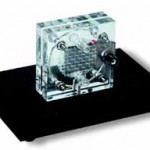[mk_page_section layout_structure=”full” attachment=”fixed” bg_position=”center top” bg_repeat=”no-repeat” bg_stretch=”true” parallax=”true” parallax_direction=”vertical” bg_video=”no” mask=”false” mask_opacity=”0.6″ expandable=”false” padding=”20″ full_height=”true” full_width=”false” section_id=”philosophy” bg_color=”#ffffff” bg_image=”https://hr-fuelcell.com/wp-content/uploads/2014/11/naked-trees-in-white-fog.jpg”][vc_column width=”1/1″][mk_padding_divider size=”200″][mk_fancy_title style=”avantgarde” tag_name=”h3″ border_width=”5″ size=”18″ line_height=”30″ color=”#393836″ font_weight=”inherit” letter_spacing=”5″ font_family=”none” margin_bottom=”10″ align=”center”]
THE PHILOSOPHY
[/mk_fancy_title][mk_padding_divider size=”40″][vc_tabs style=”style1″ orientation=”horizontal” container_bg_color=”#f9f9f9″][vc_tab title=”Innovation” tab_id=”1415982943-1-32″][vc_column_text]

HR-FuelCell is an innovative idea leading to reduced CO2 emission, thus making a positive contribution in the struggle against climate warming.
This patented procedure is based on introducing oscillation to the membrane contained in a fuel cell, thereby bringing about improved interaction between the ions and atoms involved in the processes. The speed at which the ions diffuse through the membrane is determined by the level of the potential barriers. This level is reduced by the oscillating membrane so that the ions can diffuse more quickly through the membrane, which in turn increases the reaction speed.
Another effect of this is to minimise a basic problem of fuel cells, namely the concentration of intermediates at anode and cathode. The oscillations generated stimulate the reaction of the intermediates and so improve the fuel cell’s overall capacity of reaction.
Analogous to the combustion engine, one can also refer to the unit for ‘setting the membrane into oscillation’ as a ‘fuel cell turbo loader’. But basically speaking, every “turbo loader” leads to increased consumption. The same applies here. So why not install more fuel cells to begin with, instead of a ‘turbo loader’? As with combustion engines, there are also plenty of reasons to ‘downsize’ when it comes to fuel cell technology: 1) The oscillator means that short– and medium-term peak demands can be catered for without oversizing the cell as a whole. 2) The production of fuel cells also necessitates precious metals such as platinum. These metals are very expensive. 3) Fuel cells that operate in idle mode or with low output generate particularly high concentrations of intermediates at the membrane, which in turn leads to considerable loss of performance. 4) The oscillator also represents a weight saving, since fewer fuel cells are needed.
[/vc_column_text][/vc_tab][vc_tab title=”Patent” tab_id=”1415982943-2-23″][vc_column_text]
PLEASE FOLLOW THIS LINK.[/vc_column_text][/vc_tab][vc_tab title=”Why Fuel Cells and Not Batteries” tab_id=”1415983879028-2-1″][vc_column_text]

The fuel cell doesn’t just combine the advantages of the battery with those of the combustion engine but in fact improves one aspect of performance. While the battery stands for highly efficient green energy, the combustion engine stands for ease of handling over an extensive cruising range. When it comes to energy efficiency, the fuel cell even outdoes the battery.
Both fuel cells and batteries are capable of producing climate-neutral energy. It is the amount of electricity required that poses the problem here. In the medium term, ecologically generated electricity is not able to satisfy the energy demands of what is a growing number of electrically powered vehicles. This additional demand could only be met by means of electricity generation that cause CO2. The advantage of the fuel cell is that, unlike electricity, the energy source required to operate it (e.g. methanol, hydrogen) can be supplied via a wide variety of climate-neutral processes.
Besides green generation of electricity, the amount of energy actually consumed is relevant to environmental protection. Energy efficiency plays an important role in this regard. The transport and storage of electric energy leads to a considerable amount of energy being lost, even with batteries. However, as far as transport and storage are concerned, the energy sources for fuel cells are extremely efficient. In fact there is no loss involved in the storage of methanol. With regard to energy efficiency, fuel cells are thus far more economic and ecological than batteries.
Another argument in favour of the fuel cell is the very good balance of materials and energy during production, since here again, batteries are far less ecological and economic. The very high proportion of heavy metals and other expensive materials in the batteries pollutes the environment and escalates costs.
[/vc_column_text][/vc_tab][vc_tab title=”Why a Direct Methanol Fuel Cell” tab_id=”1415983908897-3-0″][vc_column_text]

For the mobile sector, fuel cells can be split into two main groups. One group is that of the direct methanol fuel cells (DMFC) and the other is that of the hydrogen fuel cells (HFC). The energy sources for both types of fuel cell can be produced on a CO2-neutral basis.. Here, however, energy efficiency varies a great deal.
The HFC enjoys far greater public awareness than the DMFC. The internet, the media and the R&D departments of car companies focus predominantly on the HFC.
It is, however, the DMFC that holds the greatest potential to drastically reduce carbon dioxide emission. Even though the DMFC emits CO2, one can drive three times as far as a comparable combustion engine with the same emission. The logical consequence of this is a clear drop in CO2 emissions. What is more, the bulk of the methanol can be produced on a CO2-neutral basis. By comparison, the CO2-reducing potential of HFC cars, which produce zero CO2 emissions in the field but are also indirectly responsible for producing CO2 through the preparation of H2, is negligible. It would be an enormous step forward for the environment and climate if in 10 years’ time three-quarters of all cars in the world were to emit just one third of the current levels of CO2. The environmental advantages of the global fall in oil consumption and the heavily reduced CO2 emissions would be enormous.
Availability and infrastructure of methanol:
Methane is available worldwide in sufficient quantities. It is even simply incinerated, for example in oil mining, or released into the atmosphere, for example in agriculture. Enough methanol could in fact already be produced in CO2-free mode in the agricultural sector alone.
The technical facilities for transporting and storing methanol are already in place. It would only take minor modifications to render the current conventional petrol infrastructure fit for use. The same applies to the safety standards, as these are also identical.
Availability and infrastructure of hydrogen as opposed to methanol:
The everyday handling of hydrogen is far more costly and complex than that of methanol. This results in much higher costs and thus presents a particular obstacle to widespread use in less developed areas. Hydrogen requires an expensive infrastructure whose construction and maintenance also use a lot of energy. There are also strict safety standards to be adhered to.
To sum up, it is clear that hydrogen can’t beat the superior energy efficiency of methanol. Methanol consumes far less energy during both production and transport. This is not to denigrate hydrogen or place it on a par with the fossil fuels. When fuel cell technology develops further thanks to the establishment of the DMFC, and once new ecological forms of energy become available, then the HFC will also have its day. However, the pressing question for the immediate future is that of energy efficiency and how much more CO2 will be generated during hydrogen production and in the overall infrastructure of the hydrogen cycle.
[/vc_column_text][/vc_tab][/vc_tabs][mk_padding_divider size=”40″][mk_fancy_title style=”avantgarde” tag_name=”h3″ border_width=”5″ size=”18″ line_height=”30″ color=”#393836″ font_weight=”inherit” letter_spacing=”5″ font_family=”none” margin_bottom=”10″ align=”center” animation=”fade-in”]
STATEMENT
[/mk_fancy_title][mk_padding_divider size=”40″][vc_column_text animation=”fade-in”]
It is not just consumption levels that are of fundamental importance for an eco-friendly approach to energy, but also the degree of efficiency achieved.
If we make drastic cuts to our comfort, fun and enjoyment, then we can save a lot of energy and thus reduce CO2 emissions. But such a life would no longer be worth living. The only alternative is to look to energy efficiency, with its huge and as yet untapped possibilities.
An environmentally aware and economically meaningful way forward would be to use ecological electricity for stationary consumers who have no alternative sources of supply. In the mobile sector, one could use direct methanol fuel cells to produce efficient energy and preserve the environment. It is important to remember here: ecologically generated energy makes up only a limited proportion of the total energy sector. The bulk of energy production generates CO2. If we hand over our ecological energy to electric vehicles, then more CO2-producing energy will be needed elsewhere. The energy efficiency of the fuel cell is, however, higher than that of the battery in terms of production, transport and storage.
To recap, it is fair to say that in the short and medium term, there are no alternatives to direct methanol fuel cells when it comes to reducing the level of CO2 emissions quickly and drastically.
[/vc_column_text][mk_padding_divider size=”200″][/vc_column][/mk_page_section]